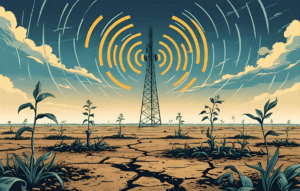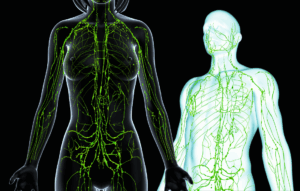Electromagnetic radiation (EMR) from electromagnetic fields (EMF) has become an inescapable part of modern life, woven into the fabric of the last two centuries’ technological advancements. From early telegraphs to the omnipresent 5G networks of today, the development of telecommunications and other EMF technologies has transformed how we live, communicate, and work. Yet behind this rapid evolution lies a growing concern—my firm belief is that no form of man-made radiation is truly safe for humans.
EMR contributes to oxidative stress, nervous system dysregulation, and worsening of existing health conditions, sometimes severely. In this article, we will recap the history of man-made EMF, beginning with early telecommunication technologies and moving through various forms such as sonar, gamma radiation, radar, and microwaves. We’ll also dive into each generation of mobile technology (1G through 5G), explaining the associated health risks and the evolution of exposure. Finally, we’ll discuss practical tips for reducing EMF exposure and highlight how Aires Tech products offer critical protection in today’s EMF-saturated world.
The Foundations of Man-Made EMF: Telegraphy, Radio Waves, and Early Communication
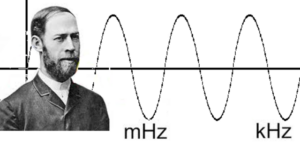
The development of man-made electromagnetic radiation can be traced back to the early 19th century when Samuel Morse successfully demonstrated the telegraph in 1837. By sending electrical signals through wires, this invention laid the groundwork for long-distance communication. However, it wasn’t until the discovery of electromagnetic waves by Scottish physicist James Clerk Maxwell and later their demonstration by Heinrich Hertz in 1887 that true wireless communication became possible.
The Emergence of Radio Waves

Radio waves were the first form of EMF to be widely harnessed by humans. By the early 20th century, radio communication had become an essential tool in global communication, especially during World War I and II, thanks to the work of Guglielmo Marconi. Radio waves, which are part of the electromagnetic spectrum, allowed signals to travel through the air without the need for physical wires, revolutionizing how information was transmitted across vast distances.
Health Risks: Even early radio waves, though relatively low frequency, posed concerns for human health. Studies conducted later in the 20th century suggested that prolonged exposure to these waves could lead to oxidative stress and an increased risk of neurological disorders, such as electromagnetic hypersensitivity (EHS).
The Advent of Sonar and Radar: New Frontiers in EMF
Sonar (Sound Navigation and Ranging)
While sonar operates using sound waves rather than electromagnetic waves, it still represents a significant early use of man-made radiation for navigation and military applications. Developed in the early 20th century, sonar was refined during World War I and World War II to detect submarines and navigate undersea environments. It operates by sending out sound pulses and measuring the echoes that return after hitting objects.
Health Risks: For humans, sonar has limited direct impact unless there is prolonged exposure to high-decibel sound waves, such as in military submarines or certain industrial settings. Exposure to high-intensity sound waves can damage hearing and cause nervous system stress.
Radar (Radio Detection and Ranging)

Radar, first developed during the 1930s, was a key technology used in World War II to detect enemy aircraft and ships. Radar systems emit radio waves and analyze the reflected signals that bounce back after striking an object, allowing operators to locate distant objects with precision. Radar has since become a staple in aviation, meteorology, and even law enforcement.
Health Risks: Military personnel and air traffic controllers who work near radar systems have reported higher rates of headaches, dizziness, and neurological disorders due to prolonged exposure to radar radiation. Studies have shown that radar exposure contributes to oxidative stress, and over time, this could increase the risk of cancer and other diseases.
Gamma Radiation: From Discovery to Danger

Discovered by French physicist Henri Becquerel in 1896 while studying uranium, gamma radiation is the most energetic form of electromagnetic radiation. Gamma rays are emitted during radioactive decay and nuclear reactions, and they can penetrate deep into human tissue. While gamma radiation has been used for “critical” applications in medicine, such as in cancer treatment, it also comes with severe health risks.
Health Risks: Gamma radiation is well-known for its ability to damage DNA, which can lead to cancer and other health problems. Even low-level exposure can result in oxidative stress, contributing to cellular damage and increased aging.
Microwaves: From War to the Kitchen and Beyond
Microwaves, which operate at frequencies between radio waves and infrared light, were first used in radar systems during World War II. Post-war, they found their way into kitchens with the development of microwave ovens in the 1960s. Today, microwaves are widely used in wireless communication technologies, including Wi-Fi, Bluetooth, and cell phones.
Health Risks: Microwaves can penetrate biological tissues and are absorbed by water molecules. While microwave ovens are typically shielded, exposure to microwaves from devices like cell phones and Wi-Fi routers has been linked to oxidative stress, DNA damage, and the potential for cancer. The World Health Organization (WHO) has classified RF radiation from microwaves as a possible carcinogen.
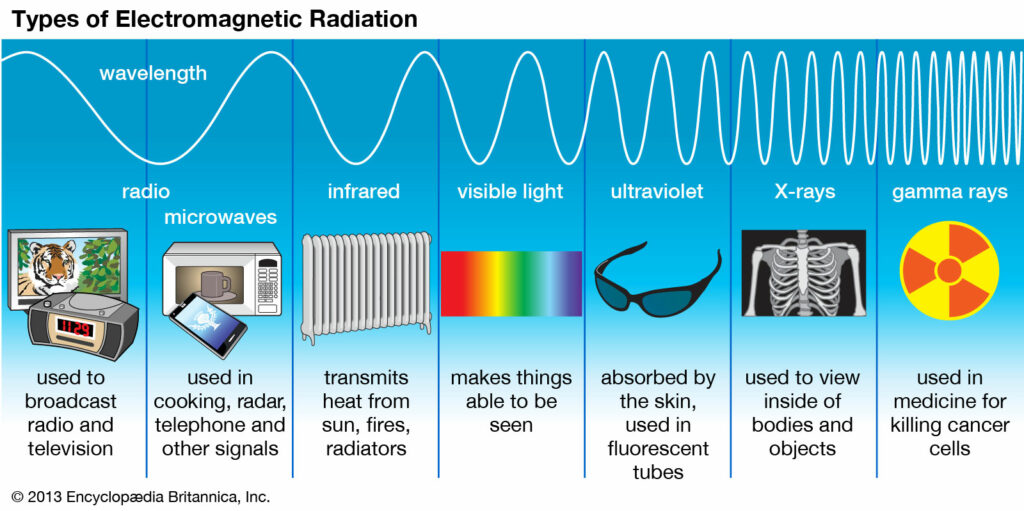
The Evolution of Telecommunication: 1G to 5G
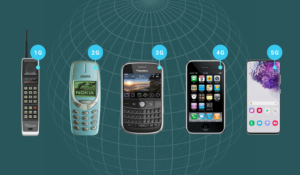 The First Generation (1G): Analog Cellular Networks
The First Generation (1G): Analog Cellular Networks
The development of 1G networks in the 1980s allowed mobile phones to communicate wirelessly, albeit with analog technology. While revolutionary, these networks emitted low-frequency RF radiation, which raised some health concerns at the time.
Health Risks: Analog RF radiation, while weaker than modern frequencies, still posed risks. Long-term exposure to analog RF was linked to various health issues, including an increased risk of cancer and nervous system disorders.
The Second Generation (2G): Digital Networks and SMS
With the introduction of 2G networks in the early 1990s, telecommunications shifted from analog to digital technology. This advancement improved voice quality and introduced SMS (text messaging). However, digital signals came with more powerful RF radiation.
Health Risks: Digital RF radiation from 2G networks contributed to growing concerns about oxidative stress, EHS, and potential DNA damage. Studies indicated that exposure to digital RF increased the risk of nervous system disorders.
The Third Generation (3G): Mobile Data and the Rise of Smartphones
3G, introduced in the early 2000s, allowed mobile phones to access the internet for the first time, leading to the rise of smartphones. However, 3G also increased the amount of RF radiation emitted by mobile devices.
Health Risks: The proliferation of 3G networks significantly raised concerns about EMF exposure. Studies suggested that 3G radiation contributed to oxidative stress, fertility issues, and an increased risk of cancer.
The Fourth Generation (4G): High-Speed Internet and Streaming
4G, rolled out in the 2010s, revolutionized telecommunications by enabling high-speed internet and streaming services. This, however, increased the constant exposure to RF radiation from smartphones, Wi-Fi routers, and Bluetooth devices.
Health Risks: Constant exposure to 4G RF radiation has been linked to neurodegenerative diseases, inflammation, and oxidative stress. There’s also concern about the impact on children, whose developing bodies are more vulnerable to EMF radiation.
The Fifth Generation (5G): The Millimeter Wave Revolution
5G represents the latest leap in telecommunications, offering faster speeds, lower latency, and the ability to connect billions of devices through the Internet of Things (IoT). Unlike previous generations, 5G uses millimeter waves (MMWs), which are absorbed more readily by the skin and eyes.
Health Risks: Early research indicates that 5G’s millimeter waves could exacerbate health problems linked to lower-frequency RF radiation, such as oxidative stress, DNA damage, and immune system suppression. The higher frequency and closer proximity of 5G towers mean that people are exposed to more intense radiation than ever before.

The Dangers of Man-Made EMF Radiation
EMF radiation, whether from telecommunications networks, sonar, radar, gamma radiation, or microwaves, disrupts the body’s natural processes. The health risks associated with exposure include oxidative stress, nervous system dysregulation, and the development of EHS.
Oxidative Stress
EMF exposure causes an imbalance between free radicals and antioxidants in the body, leading to oxidative stress. This condition contributes to inflammation, DNA damage, and an increased risk of chronic diseases such as cancer and neurodegenerative disorders.
Nervous System Dysregulation
The nervous system is particularly sensitive to EMF, as it relies on finely tuned electrical signals to function. Exposure to EMF can disrupt these signals, leading to symptoms such as heart palpitations, anxiety, and cognitive difficulties. Prolonged exposure may increase the risk of neurodegenerative diseases.
Electromagnetic Hypersensitivity (EHS)
EHS is a condition where individuals experience a range of symptoms, including headaches, fatigue, and insomnia, in response to EMF exposure. While EHS is not officially recognized in many countries, a growing body of evidence suggests that it is a real and debilitating condition.
Practical Tips to Reduce EMF Exposure
Given the health risks associated with man-made EMF radiation, it’s crucial to take steps to minimize exposure. Here are some practical ways to protect yourself:
 1. Grounding (Earthing)
1. Grounding (Earthing)
Grounding involves walking barefoot on natural surfaces like grass or soil to balance the body’s electrical charge. This practice helps neutralize free radicals and reduces inflammation, mitigating the effects of EMF exposure.
2. Smart Tech Use
Limiting your use of wireless technology can significantly reduce your EMF exposure. Turn off Wi-Fi routers at night, keep your phone in airplane mode when not in use, and avoid using Bluetooth devices like AirPods. Use wired alternatives whenever possible.
3. Eat a High-Antioxidant Diet
Consuming foods rich in antioxidants can help your body combat the oxidative stress caused by EMF exposure. Berries, leafy greens, nuts, and seeds are all excellent sources of antioxidants that support cellular health.
4. Aires Tech EMF Protection: A Vital Tool for Modern Living
Aires Tech offers a suite of scientifically backed products designed to reduce the harmful effects of EMF radiation. These products use patented microprocessors that restructure electromagnetic waves, neutralizing their impact on the body.
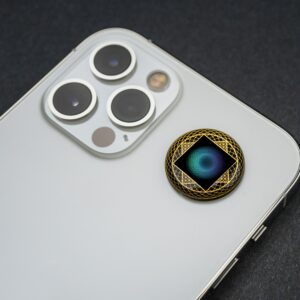
How Aires Tech Works
Aires Tech devices use advanced microprocessor technology to harmonize EMF radiation before it reaches your body. These devices create a protective field around you, preventing the harmful effects of EMF from interfering with your biological processes. Whether you’re at home, at work, or on the go, Aires Tech devices offer a crucial layer of protection against the growing exposure to EMF radiation.
Why Choose Aires Tech?
Scientifically Proven: Aires Tech’s products have been rigorously tested and validated by peer-reviewed studies and clinical trials. These devices have shown measurable success in reducing the impact of EMF radiation on human health, including lower levels of oxidative stress and reduced symptoms in individuals with EHS.
Wide Range of Products: Aires Tech offers portable devices that can be placed on your phone, laptop, or router, as well as personal devices you can carry with you wherever you go.
Designed for Everyday Use: Whether you’re a frequent traveler, a heavy tech user, or someone simply concerned about EMF exposure in your home, Aires Tech offers practical solutions that seamlessly integrate into your daily routine.
5. Time in Nature
Spending time in nature, away from electronic devices, allows your body to recover from the constant bombardment of EMF radiation. Studies have shown that being outdoors can reduce stress levels and improve mental clarity, providing a reset for the body’s natural rhythms.
Conclusion
The history of man-made EMF radiation is a story of technological progress intertwined with increasing health risks. From the early days of radio waves and sonar to the latest 5G networks, each stage of development has expanded our exposure to electromagnetic radiation. While these technologies have revolutionized communication, they have also introduced dangers that we must take seriously.
By understanding the history and risks associated with man-made EMF radiation, we can take meaningful steps to reduce our exposure and protect our health. Grounding, smart tech use, a high-antioxidant diet, and investing in advanced EMF protection like Aires Tech can all help mitigate the harmful effects of this invisible threat. As our world becomes ever more connected, safeguarding ourselves from the unseen dangers of EMF radiation becomes more important than ever.







